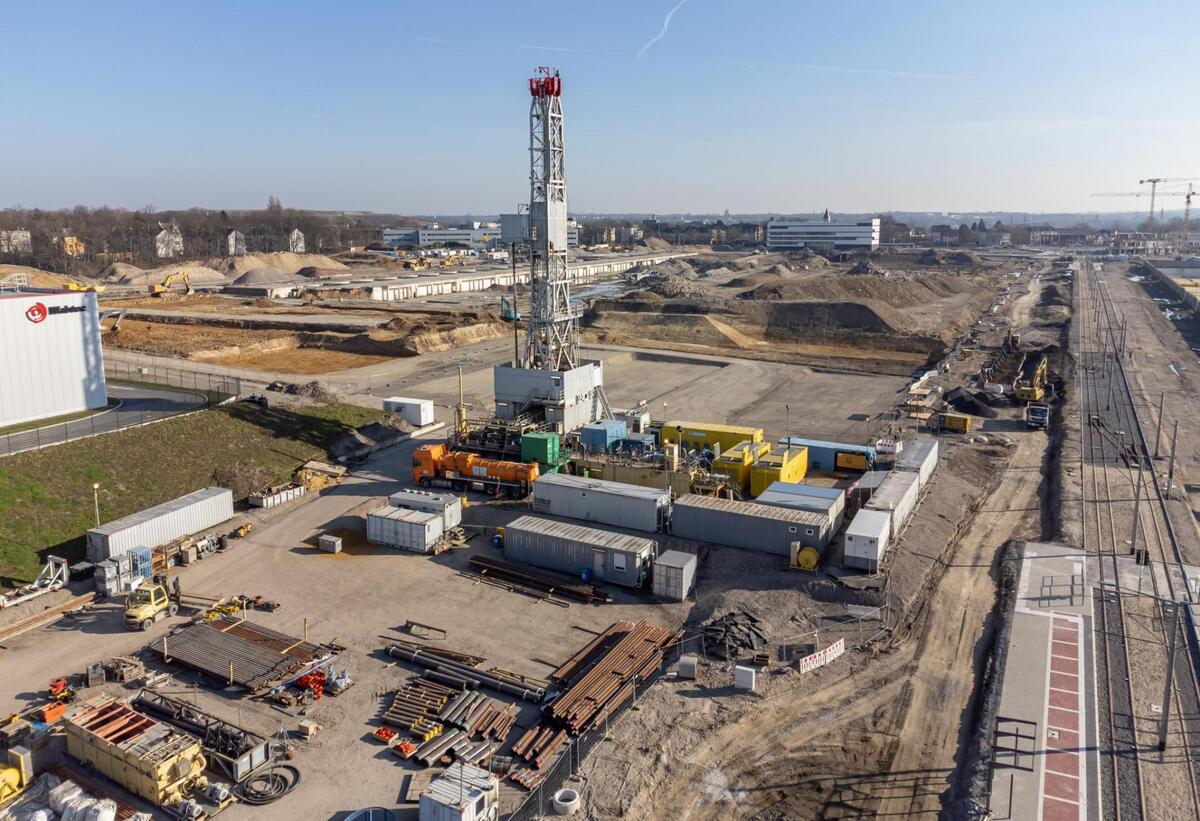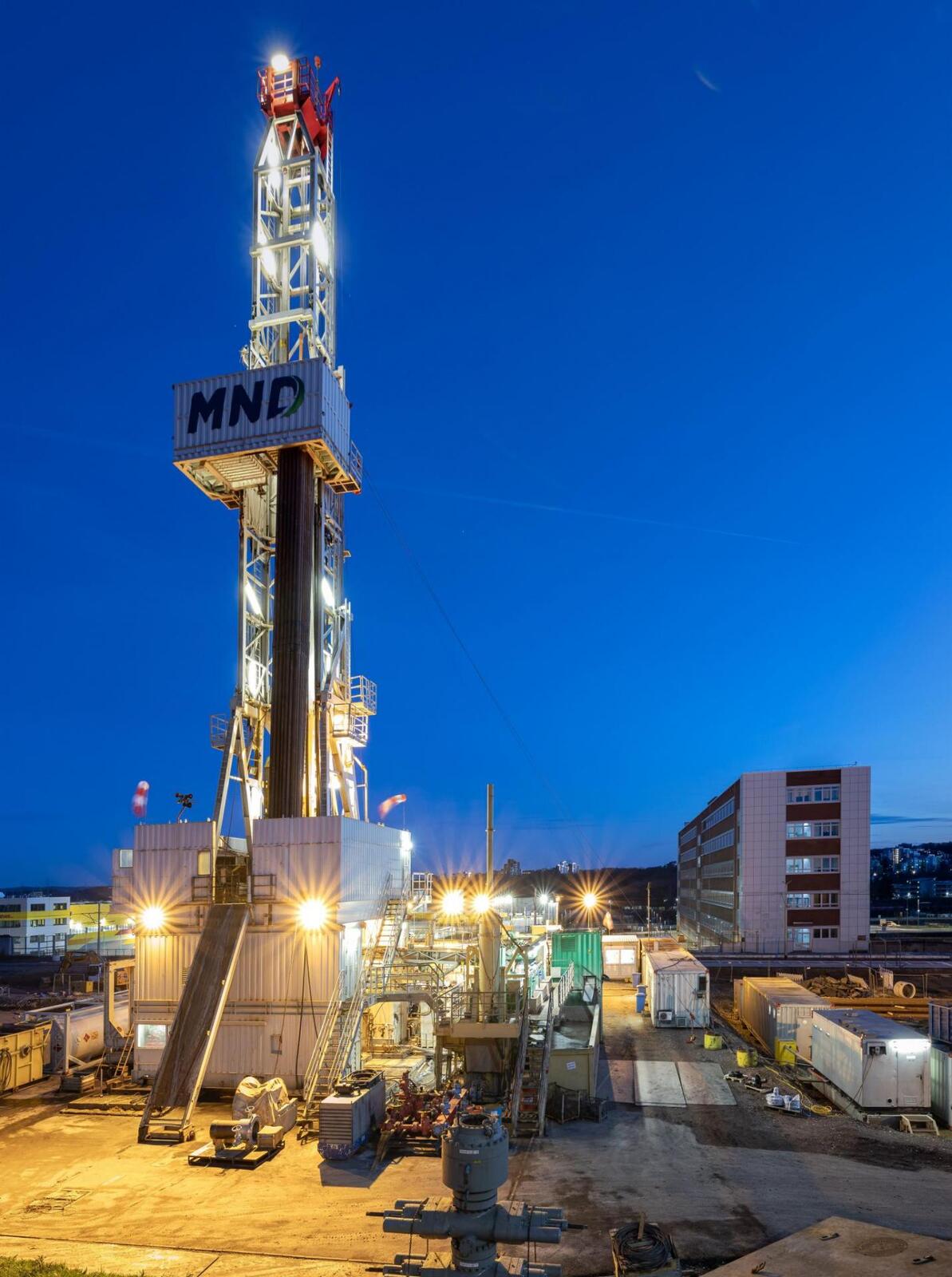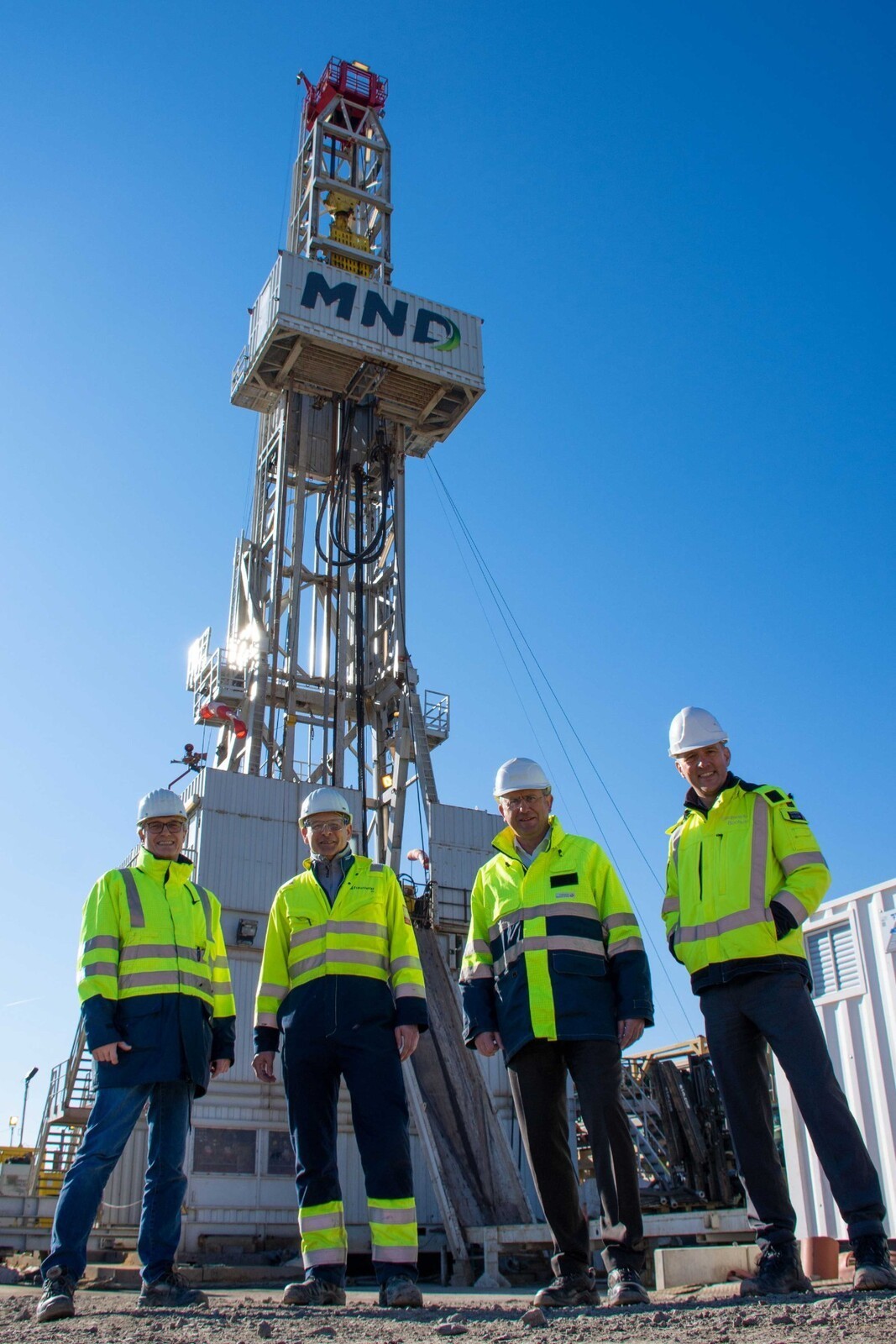Both boreholes for tapping mine water at the Bochum pilot site successfully drilled !
D2Grids Project

Stadtwerke Bochum, FUW GmbH and Fraunhofer IEF have tapped mine water at the MARK 51°7 site in Bochum with two boreholes. This site is one of the 5 pilot sites of the European D2GRIDS project, which aims to promote 5th generation for District Heating and Cooling grids. After the first borehole with a depth of about 340 metres was successfully drilled in February, the second borehole, which reaches a depth of about 820 metres, has now been completed.
Both boreholes will be part of an energy-saving, so-called 5th generation heating and cooling supply for the commercial customers at the site. FUW GmbH, a subsidiary of the municipal utility, and the Fraunhofer Institute for Energy Infrastructures and Geothermal Energy IEG jointly explored the use of mine water at the MARK 51°7 site. Together, they implemented the drilling concept with the drilling company MND Drilling.
The next work steps will now consist of various pumping tests to better assess the yield of the mine water. The key question to be answered now is how much water at what temperatures, can be used and extracted in the long term.
"We are very pleased about the successful completion of the geothermal drilling. At MARK 51°7, the heat turnaround is becoming a reality! Even in international comparison, we are creating a very innovative and forward-looking energy supply here," explains Dietmar Spohn, spokesman for the management of Stadtwerke Bochum. "We will now finalise the planning of the plant technology for the mine water extraction at the drilling site and for the new Energy Centre East. There, heat and cold energy contained in the mine water will be brought to the temperature level required to supply customers using heat pumps."

"Tackling the heat transition is more urgent today than ever before. Geothermal energy combines all the characteristics we need for a future-proof location, because it is sustainable, regional, weather-independent, and independent of raw material imports such as oil and gas," emphasises Prof. Dr. Rolf Bracke, Director of the Fraunhofer IEG based in Bochum. "We are pleased to be able to make this supra-regional, exemplary contribution to innovation together with the municipal utilities at MARK 51°7, thus combining geothermal energy, heating grids, underground storage and large heat pumps in a showcase project for the municipal heat transition in Germany."
For the heat supply, the water from the former Dannenbaum colliery, which has a temperature of around 30 degrees Celsius, is to be heated to around 45 Celsius degrees by heat pumps and then fed into the grid. The mine water will also be used to provide cooling for the properties under construction. For this purpose, "cold" water at about 18 degrees Celsius is extracted from a depth of about 340 metres.

According to forecasts, the natural energy potential of the mine water will cover more than 75 per cent of the heating and cooling needs of the connected consumers through this optimal use of energy. The remaining heat demand is covered by the district heating network of FUW GmbH. Additional cooling requirements on very hot days are transferred to the MARK 51°7 cooling network via conventional cooling systems.
This new energy concept makes an important contribution to climate protection. By using the sustainable and renewable energy source of mine water, climate-damaging greenhouse gas emissions (CO2) are reduced by a total of around 3,200 tonnes per year compared to a conventional heating and cooling supply with natural gas operation and electrical compression refrigeration machines.
contact[a]5GDHC.eu




